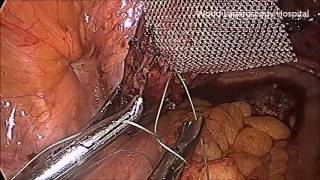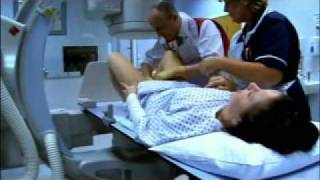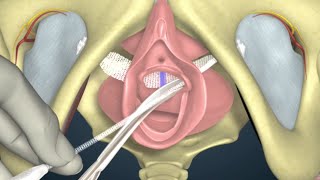Saturday, 20 December, 2025г.
















Где искать: по сайтам Запорожской области, статьи, видео ролики
пример: покупка автомобиля в Запорожье
Cystocele and stress urinary incontinence synthetic repair using a self-tailored polypropylene mesh
Objectives: we present a video of our technique for the management of stress urinary incontinence and vaginal prolapse, using a self-tailored polypropylene mesh.
Material and methods: for economic reason we use a polypropylene monofilament mesh of 15/15 cm for transobturator tape treatment of stress urinary incontinence and for cystocele synthetic repair.
For the sub-urethral sling, a tape of 1 cm large and 15 cm long is harvested from the polypropylene mesh. A vaginal incision under the mid-urethra is performed and then the mesh is implanted with the transobturator outside-in technique.
The cystocele mesh is tailored from the remaining 14/15 cm polypropylene mesh, with 2 or 4 arms. A transversal vaginal incision is performed 1 cm above the cervix. The vaginal wall is dissected from the bladder. The cystocele mesh is placed through the vaginal incision and the arms are placed with the transobturator outside-in technique.
Results: the use of self-tailored polypropylene mesh is possible for using as sub-urethral sling for urinary incontinence. In addition, it can be used for the transobturator cystocele synthetic repair. A 15/15 cm mesh was sufficient for both repairs. No infectious complication or mesh erosion was noted. The great benefit of this self-tailored mesh is the economic gain since it is at least 6-times cheaper than the manufactured ones. Moreover, in this case one single mesh is used instead of 2, to treat both pathologies.
Conclusion: the use of a self-tailored mesh is possible, and safe for the transobturator repair of stress urinary incontinence and cystocele synthetic repair. In addition it has a real economic benefit compared to the usual meshes.
Теги:
vaginal wall prolapse urinary incontinenece mesh repair synthetic cystocele tape transobturator polypropylene self-tailored female urology gynecology surgery motion
Похожие видео
Мой аккаунт


 У вашего броузера проблема в совместимости с HTML5
У вашего броузера проблема в совместимости с HTML5


